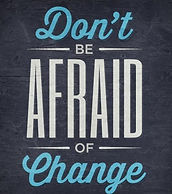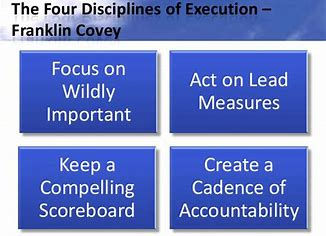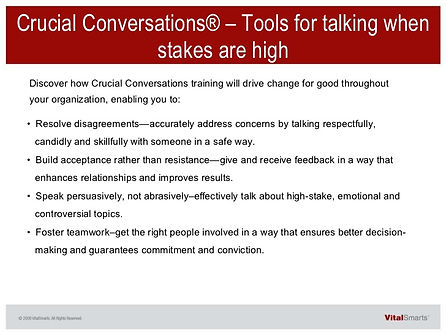
Self-differentiated Leaders
Can Create Change

PART A

As a self-differentiated leader, I will need to address the key factors that will make me a successful in making the change. Even though, there are numerous key factors, I will concentrate on those that will make me an effective leader. These factors will assist me in developing and implementing the strategies in my plan. Below are those factors that I know will guide me to assist in the developing of the change process.
-
To inspire action: I will clear away organizational roadblocks that we might encounter. By motivating my team, we should be able to accomplish our goals.
-
Be optimistic: I will seek the staff with positive attitudes to assist me in spreading optimism in implementing our plan. I can foresee some resistance to change from older staff that are not tech savvy. But with the staff that are already positive set
-
Facilitate: I will guide my team to take risks and have a voice. I will need to be able to diffuse any staff conflicts, if any. Sometimes when not everyone is on board for the same vision, sparks can flare up.
-
Be decisive: I will make tough calls if obstacles cross our path.

What is our why?
What is my purpose of my plan? I believe that blended learning will help all students succeed. We will implement strategies for all students to succeed. My first meeting with the team should motivate them to share the same vision so I will appeal to their heart.
PART B
Why Statement:
We will strive for each student to attain his/her highest potential in learning through blended learning.
How Statement:
Our approach to blended learning to blended learning will encourage interactions between student-teachers and students using different resources for comprehension of all concepts.
What Statement:
We develop blended learning practices that results in quality learning for each student with what he/she needs to succeed in their studies.
Influencer Strategy Part A
I want my team to achieve positive results and be able to measure their growth.
We also want to change vital behaviors that will result in giving strength to our plan.
I will work closely with my organizational influencers to assist that everyone is on the same track towards our vision for our plan.
Their lesson plans and class observations will be monitored by their administrators and consultant with no or few negative feedbacks
Their lesson plans and class observations will be monitored by their administrators and consultant with no or few negative feedbacks
Their lesson plans and class observations will be monitored by their administrators and consultant with no or few negative feedbacks
Their lesson plans and class observations will be monitored by their administrators and consultant with no or few negative feedbacks
Their lesson plans and class observations will be monitored by their administrators and consultant with no or few negative feedbacks
Their lesson plans and class observations will be monitored by their administrators and consultant with no or few negative feedbacks
RESULTS
MEASURED BY
Their lesson plans and class observations will be monitored by their administrators and consultant with no or few negative feedbacks
Their lesson plans and class observations will be monitored by their administrators and consultant with no or few negative feedbacks
Their lesson plans and class observations will be monitored by their administrators and consultant with no or few negative feedbacks
Their lesson plans and class observations will be monitored by their administrators and consultant with no or few negative feedbacks
Their lesson plans and class observations will be monitored by their administrators and consultant with no or few negative feedbacks
Their lesson plans and class observations will be monitored by their administrators and consultant with no or few negative feedbacks
Influencer Strategy Part B
Source 1:
PERSONAL MOTIVATION
-
Have each teacher write on a piece of a puzzle a phrase of what they want as part of the school vision statement.
-
Display student growth of other district schools that are implementing the blended learning strategies with success.
-
Suggest teachers bring to training their ideas that they would like to integrate in the model.
Source 3:
SOCIAL MOTIVATION
-
Have ice-breakers activities before, during and before closing training
-
Teachers will share positive and negative feedback on their implementation process.
-
Teachers can choose a partner or two to work with during the implementation of the plan.
Source 5:
STRUCTURAL MOTIVATION
-
Review school vision designed by the puzzle pieces that the teachers develop at the first training.
-
Have teachers develop a reward system for them/students—does not have to cost money. (free time, extra 10 minutes added to teacher’s lunchtime, etc.
-
Set a campus celebration that will involve everybody to meet set goal.
Source 2:
PERSONAL ABILITY
-
Teachers will set their own goals and review them every month.
-
Assign mentors to those that need assistance in implementing the strategies.
-
Give them positive feedback on a weekly/daily basis so they will not get discouraged.
Source 4:
SOCIAL ABILITY
-
Have teachers visit other classrooms during the implementation to obtain/share ideas.
-
Meet with teachers in small groups during the day to address concerns, strengths, etc. with goodies, if possible.
-
Create a campus file for teachers to share which will include: lessons, activities, questions, etc.
Source 6:
STRUCTURAL ABILITY
-
Have teachers discuss negative outcomes so they can assist those that still need the help---teachers or students or both.
-
Revise strategies that need adjusting/modifications immediately.
-
Continue monitoring teachers and students in the classroom on a weekly basis. If they need more assistance, provide it ASAP.
4DX Strategy
Plan
The 4DX strategy/pan must address:.
The 4 Disciplines of Execution within the 5 stages of change. Refer to and use the What to Expect section of Section 2 Installing 4DX With Your Team as a starting point or guideline for your strategy/plan.
How you will address the key actions in implementing 4DX identified at the end of each stage.
How the Influencer Model and 4DX complement/supplement each other.

Bree is a spirited and standout font that takes its inspiration from handwriting. It’s sure to grab your reader’s attention, especially in short paragraphs.
After reading this book, I was able to install and apply the 4 disciplines of execution (4DX) to bring about lasting change in people's behavior in my team/immediate learning environment.
The authors offer a simple yet effective four-step formula for execution, from goal setting to application and accountability. Although the concepts are basic, the clear instructions for implementation make this book a standout.

After being in the workforce in various roles, I have been involved in developing countless strategy plans. But never did even one of my bosses recommend that we research how to approach executing goals and strategies. Therefore, I would like to express that everyone that is assigned to develop goals and strategies within their work system, engage people's hearts and minds toward a common goal/vision. Click below on the button to view the 4Disciplines of Execution in a nutshell before approaching to develop your strategy plan.

Discipline 1
Focus on the
Wildly Important Goal (WIG)
A goal that makes all the difference. Failure to achieve this goal renders any other achievements in consequential.
Rules:
1. No team focuses on more than to WIGs (wildly important goals) at the same time.
2. The battle you choose must win the war.
3. Senior leaders can veto, but not dictate.
4. All WIGs must have a finish line in the form of ‘from X to Y by when.

Discipline 2
Act on the Lead Measures
This discipline applies disproportionate energy to the activities that drive our lead measures. This discipline is the discipline of leverage. Lead measures ar the "measures" of the activities most connected to achieving the goal.
A lag measure tells you if you've achieved the goal, a lead measure tells you if you are likely to achieve the goal. While a lag measure is hard to do anything about, a lead measure is virtually within your control.


Discipline 3
Keep A Compelling Scoreboard
The discipline of engagement
A compelling scoreboard tells you where you are and where you should be. People play differently when they know the score and disengage when they don't know the score.
Characteristics of a compelling scoreboard:
1. It has to be simple.
2. It has to be visible.
3. It should show both the lead and lag
measures.
4. It has to tell you immediately if you
are winning or losing.
Once you see the lag measure is moving because of your efforts on the lead measures, you'll become more engaged knowing you have a direct impact on results.

Discipline 4
Create a Cadence of Accountability
Big Question: What can we do this
week to impact the lead measures?
Each weekly commitment must meet three
(3) standards:
1. Represent a specific deliverable: commit
to exactly what you will do, when you will do
it, and what you expect the outcome will be.
The more specific the commitment, the
higher the accountability for it.
2. Must influence a lead measure.
3. Timely: If the real impact of your
commitment is too far in the future, it
won't help to build the weekly rhythm or
winning.



Bree is a spirited and standout font that takes its inspiration from handwriting. It’s sure to grab your reader’s attention, especially in short paragraphs.
Most teams go through five stages of behavior change. People usually deal with change in one of three ways:
Models: These models are the top performers and the most engaged. They embrace 4DX with enthusiasm and take it to the higher level.
Resisters: They are the opposite. When one introduces 4DX, some will immediately say that it won's work and that it
will be impossible to implement.
Potentials: They are the ones with the capacity to be top performers but who are not there yet. Some lack the focus on goals or the specific knowledge to improve. Others may need the added pressure of accountability to motivate them.

Stage 2: Launch
Now the team is at the starting line. Whether you hold a formal kickoff meeting or gather your team in a brief huddle, you launch the team into action on the WIG. But just as a rocket requires tremendous highly focused energy to escape the earth's gravity, the team needs intense involvement from the leader at this point of launch.
Key Actions
Identify the staff that are the models, potentials and resisters. The leader can act on the lag and lead measures by working with each group as needed.
-
The models can assist by mentoring the potentials and resisters on a regular basis. Hold brief weekly which should last no longer than 30 minutes. (Discipline 4)
-
Review and modify the lead measures during the weekly meetings. (Discipline 2)
-
Keep track of scoreboard to determine if team is winning. (Discipline 3)
Stage 3:
Adoption
Team members adopt the 4DX process and new behaviors drive the achievement of the WIG. You can expect resistance to fade and enthusiasm to increase as 4DX begins to work for them, They become accountable to each other for the new level of performance despite the demands of the whirlwind.
Key Actions
Keep track of weekly grades, six weeks grades and benchmarks on scoreboard to view if everyone is on the road to success.
-
If the lag measures are not improving, the lead measures need to be modify. If certain students' grades are not improving, these students' will need more assistance.(Discipline 2)
-
Meetings have to occur to design additional strategies for these students. (Discipline 4)
-
Keep track of scoreboard to determine if team is winning. (Discipline 3)
Stage 4:
Optimization
At this stage, the team shifts to a 4DX mindset. You can expect them to become more purposeful and more engaged in their work as they produce results that make a difference. They will start looking for ways to optimize their performance--they now know what "playing to win" feels like.
Key Actions
If your team is consistent about 4DX, one can expect team members to began optimizing it on their own.
-
Encourage ideas/recommendations from teachers for lead measures to continue moving towards success. (Discipline 2)
-
Recognize and celebrate when potentials start performing like models and when resisters start performing at any level above theirs. (Discipline 3)
-
Celebrate when scoreboard displays that team is winning. (Discipline 3)
Stage 5: Habits
When 4DX becomes habitual, you can expect not only to reach the goal but also to see a permanent rise in the level of your team's performance. The ultimate aim of 4DX is not just to get results, but to create a culture of excellent execution.
Key Actions
Once the new behaviors become ingrained in the day-to-day operation, one can set new goals and still execute with excellence again and again.
-
Celebrate with praise and small incentives the accomplishment of the WIG/s.(Disciplines 1 and 2)
-
Move on to a second WIG as soon as the first WIG is accomplished. (Discipline 1)
-
Continue assisting team members that need to become models. (Disciplines 3 and 4)
-
Emphasize that our new operating standard is sustained superior performance on lead measures. (Disciplines 1, 2, 3 and 4)
The Influencer Model
and
4DX
Complement Each Other
The Influencer Model and the 4DX both want to the find the expected results including positive vital behaviors. They both focus on implementing a strategy/goal. They both gather data for their results. The 4DX gathers the lead and lag measures' results which focuses on the performance of team members. As for the Influencer Model results, they will be measured by teachers' surveys and students' grades. Both require teachers' input such as sharing ideas and assisting each other. The Influencer Model goals depends on the vital behaviors where the 4DX focuses on using the 4 disciplines.
I strongly feel that both go hand in hand and should be used together when developing strategies/goals. Once results are studied from both, one can apply them into the design of the plan.
References
McChesney, C. (2012). The 4 Disciplines of Execution in a Nutshell.
Covey, S. (2012). Executive Overview of the Disciplines of Execution.
Covey, S., McChesney, C., & Huling, J. (2012). The 4 Disciplines of Execution:
Achieving your wildly important goals.
Grenny, J., Patterson, K., Maxfield, D., McMillan, R., & Switzler, A. (2013).
Influencer: The new science of leading change. New York, NY: McGraw-Hill.

Crucial Conversations
If I plan to have our team succeed, not only do I have to be a self=differentiated leader but also know how to handle crucial conversations. Being able to master crucial conversations can strengthen my relationships with my team an staff. Not only do I have to be a good listener but need to be able to spot those staff members that tend to hide their emotions which could stand in the way of them following our vision.
